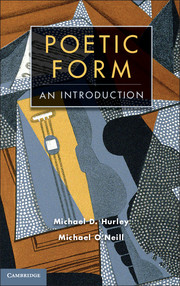Chapter 8 - Ballad and Narrative
Published online by Cambridge University Press: 05 November 2012
Summary
And at the moment when I fix my story…
Byron, Beppo (1818)Overview
‘A narrative poem’, the Princeton Encylopedia of Poetry and Poetics asserts, getting to the heart of the matter, ‘is one that tells a story’. Yet even a short lyric such as Wordsworth’s ‘A slumber did my spirit seal’ (1800) depends for its effect on the suggestion of a story, albeit one told in a highly elliptical form. In this case the story element is pointed up by the link and contrast between the poem’s two stanzas, one set in the past when ‘A slumber did my spirit seal’ (1), the second in the present when it turns out to be the troublingly connected case that ‘No motion has she now, no force’ (5). Does Lucy’s lack of motion serve as a reproach to the speaker for his former insensibility, or did that earlier ‘slumber’ serve as a displaced intimation of her current state? Lyric poetry usually contains a narrative element, while narrative frequently contains passages that have lyrical possibilities.
Overlap is inevitable since poetic compositions refuse to obey pre-existing theoretical or taxonomic imperatives, even if it is important not to blur real distinctions, as Chapter 7 has argued. Narrative poetry has its own evident traits, on which this chapter will focus. Indeed, the recognition of generic overlap is less a warning than an invitation to re-consider; it is sometimes the case that, in narrative, the reader senses a ghostly alternative in which narrative serves as the medium for impulses which might otherwise have sought lyrical expression. When Byron depicts Lara, for example, as a figure for whom ‘troubled manhood followed baffled youth’ (Lara [1814], 18.36), he plays, and his readership knows he is playing, with this idea that narrative is a medium through which the poet dramatises a version of himself.
- Type
- Chapter
- Information
- Poetic Form , pp. 189 - 212Publisher: Cambridge University PressPrint publication year: 2012

